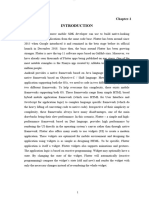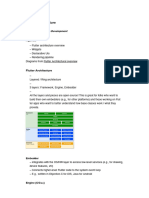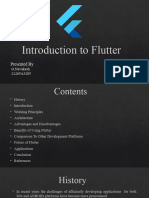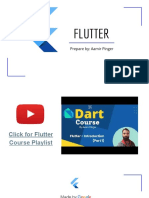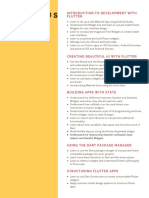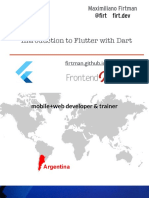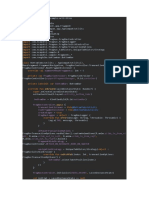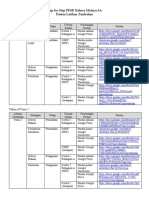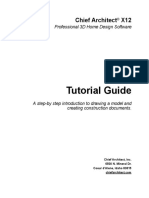0% found this document useful (0 votes)
14 views8 pagesUI Design Flutter Week 1
The document provides an introduction to Flutter, an open-source framework by Google for building applications across multiple platforms using a single codebase with the Dart programming language. It highlights key features such as a rich set of customizable widgets, fast development with Hot Reload, and high performance through direct GPU rendering. Additionally, it outlines the installation process for Flutter on Windows, including system requirements, SDK download, and setting up an Android device or emulator for development.
Uploaded by
addagudi ashwiniCopyright
© © All Rights Reserved
We take content rights seriously. If you suspect this is your content, claim it here.
Available Formats
Download as PDF, TXT or read online on Scribd
0% found this document useful (0 votes)
14 views8 pagesUI Design Flutter Week 1
The document provides an introduction to Flutter, an open-source framework by Google for building applications across multiple platforms using a single codebase with the Dart programming language. It highlights key features such as a rich set of customizable widgets, fast development with Hot Reload, and high performance through direct GPU rendering. Additionally, it outlines the installation process for Flutter on Windows, including system requirements, SDK download, and setting up an Android device or emulator for development.
Uploaded by
addagudi ashwiniCopyright
© © All Rights Reserved
We take content rights seriously. If you suspect this is your content, claim it here.
Available Formats
Download as PDF, TXT or read online on Scribd
/ 8









